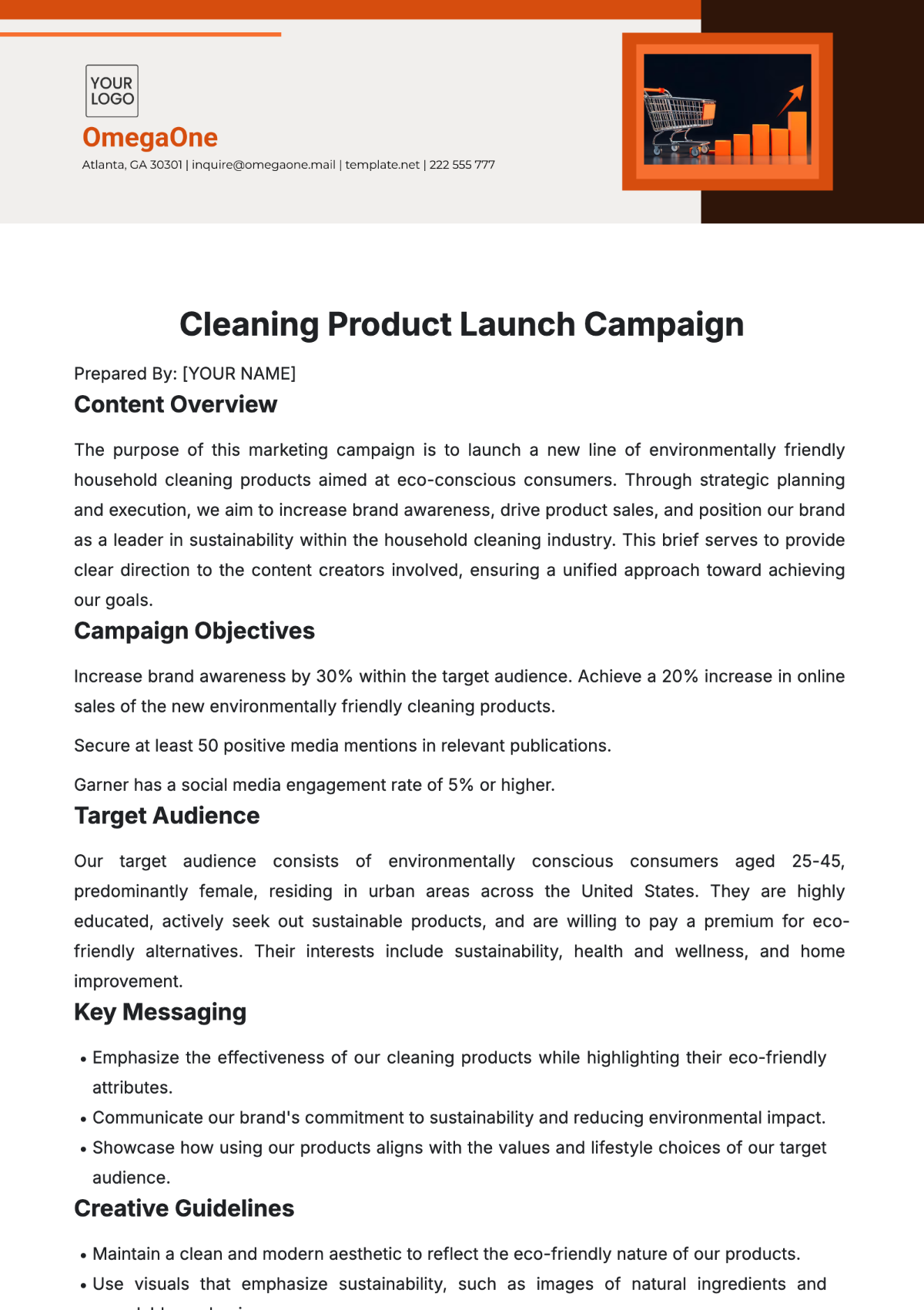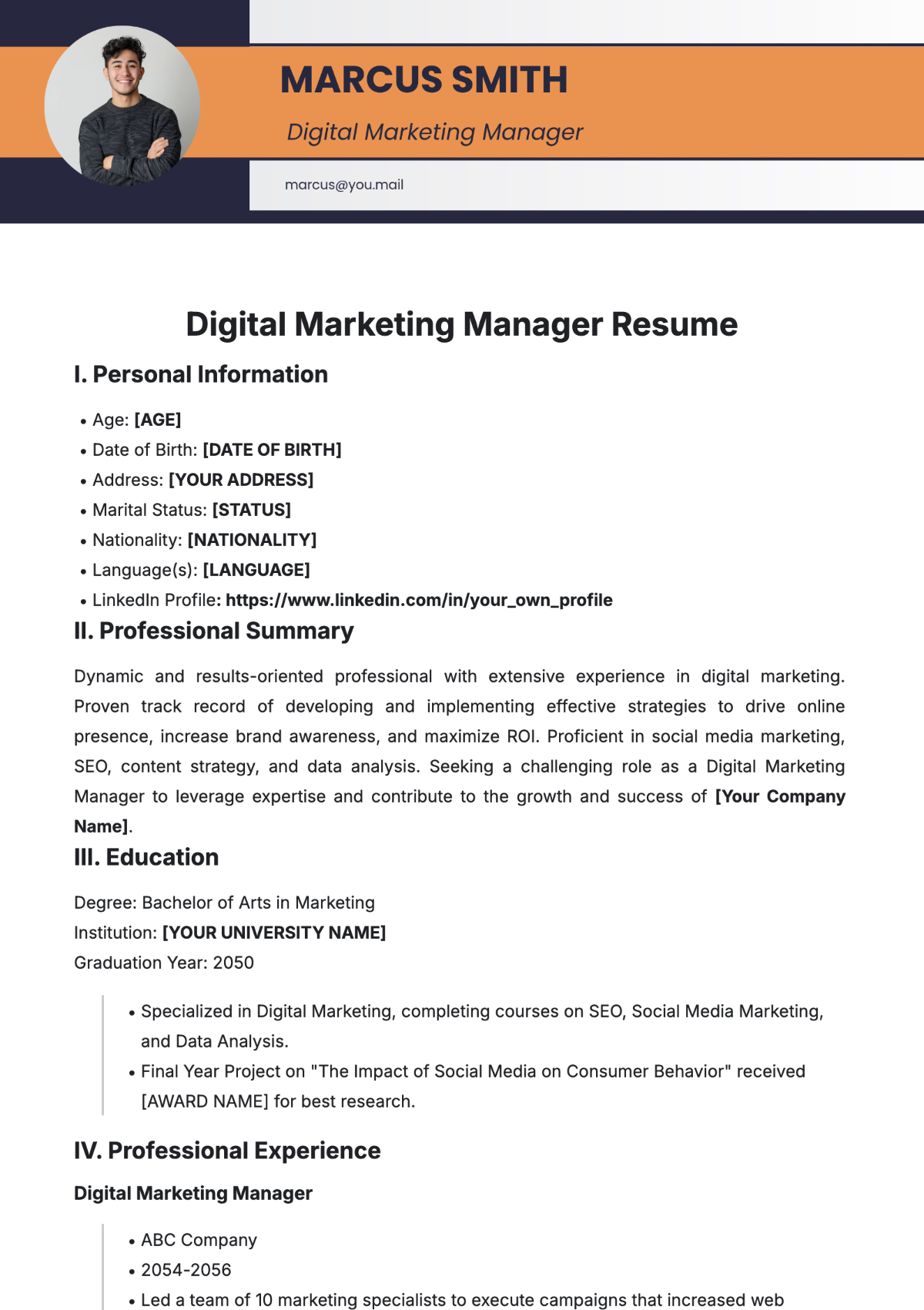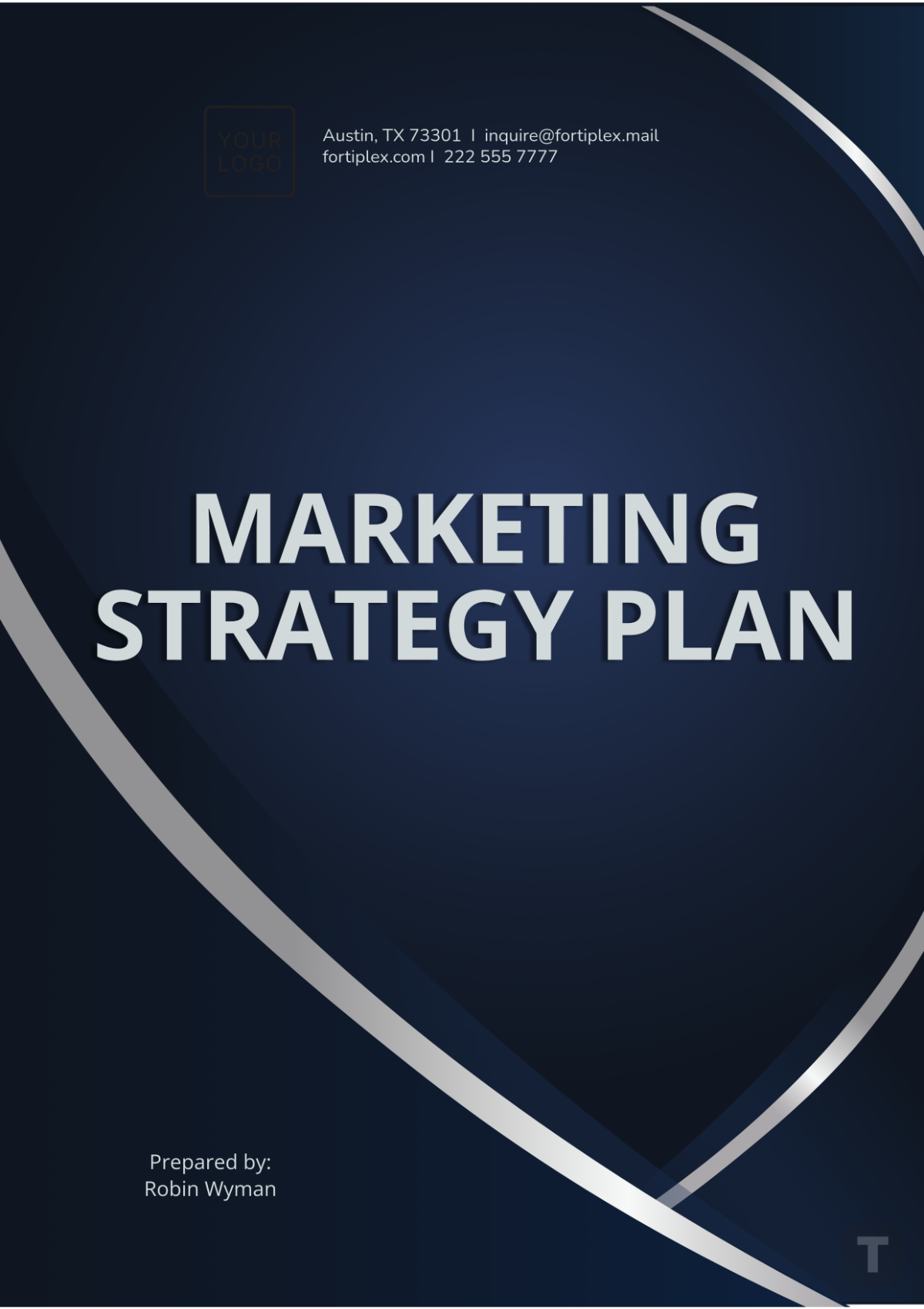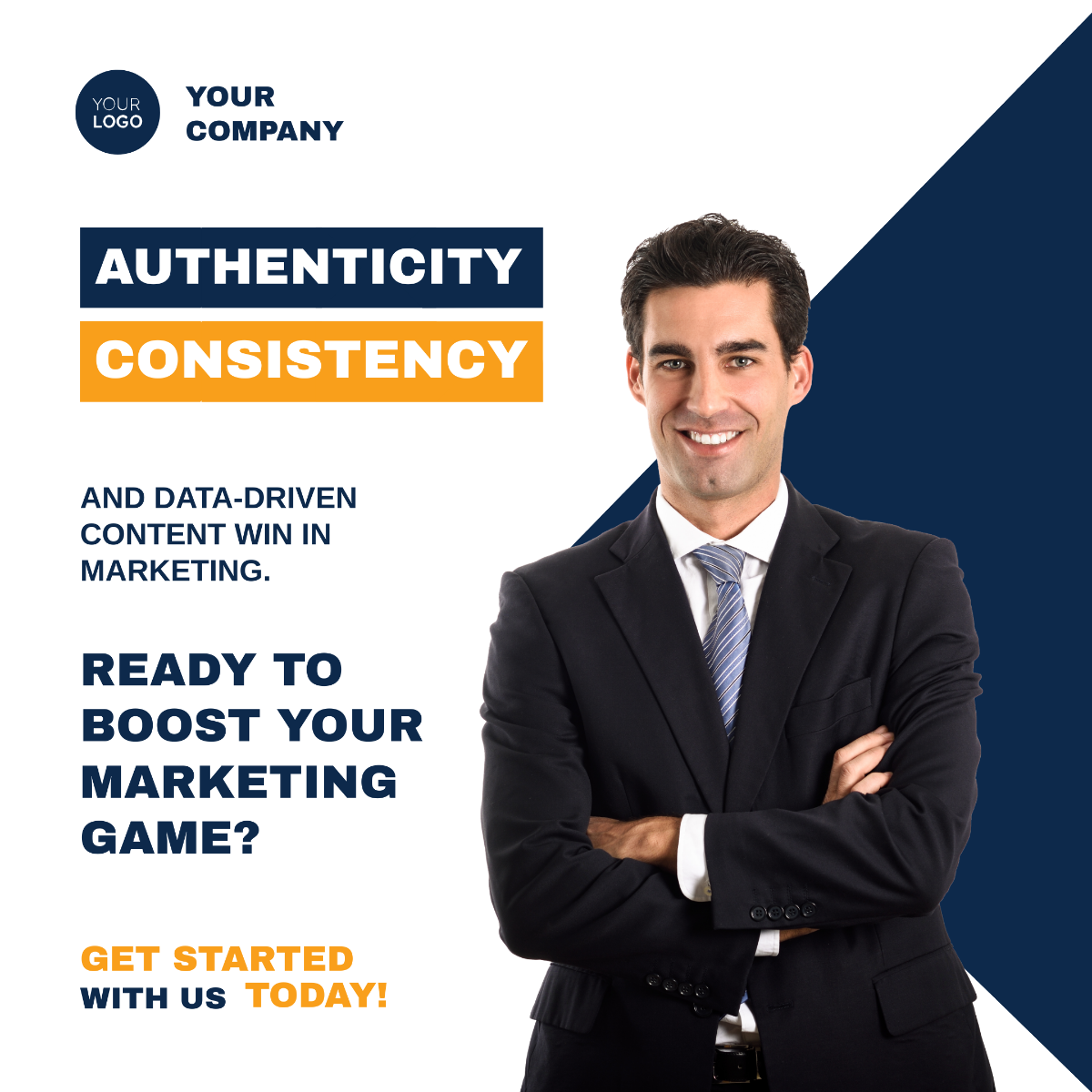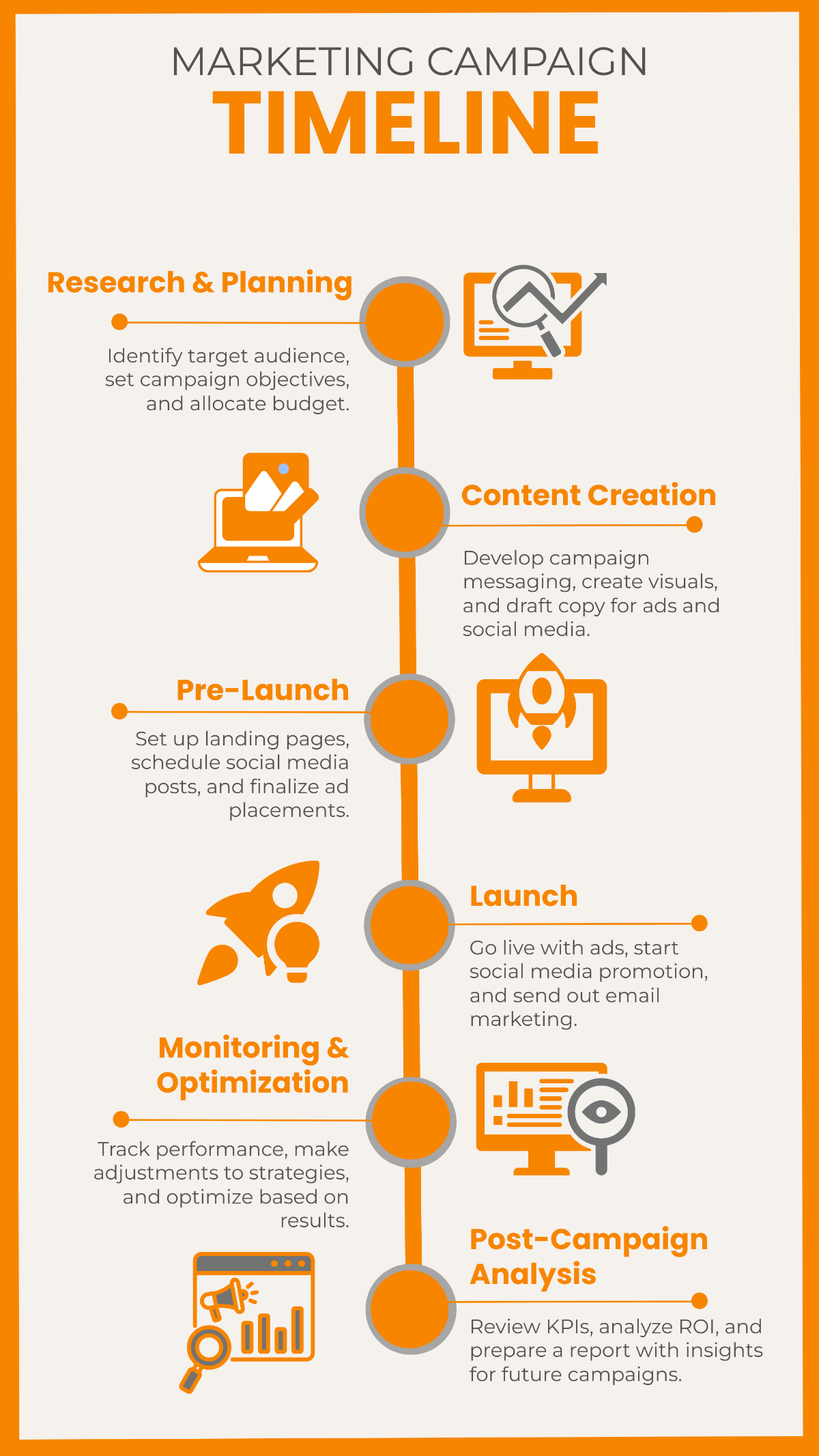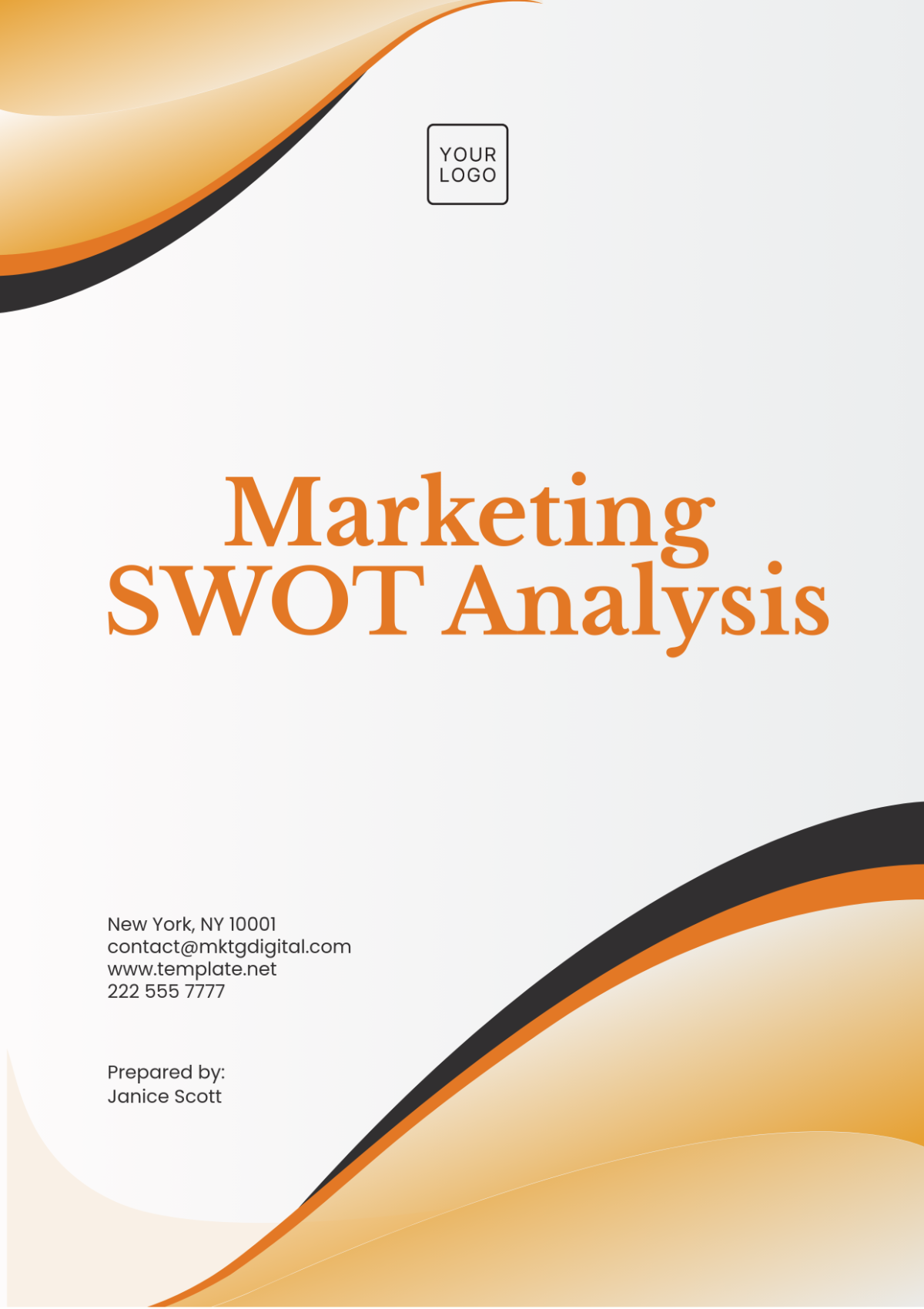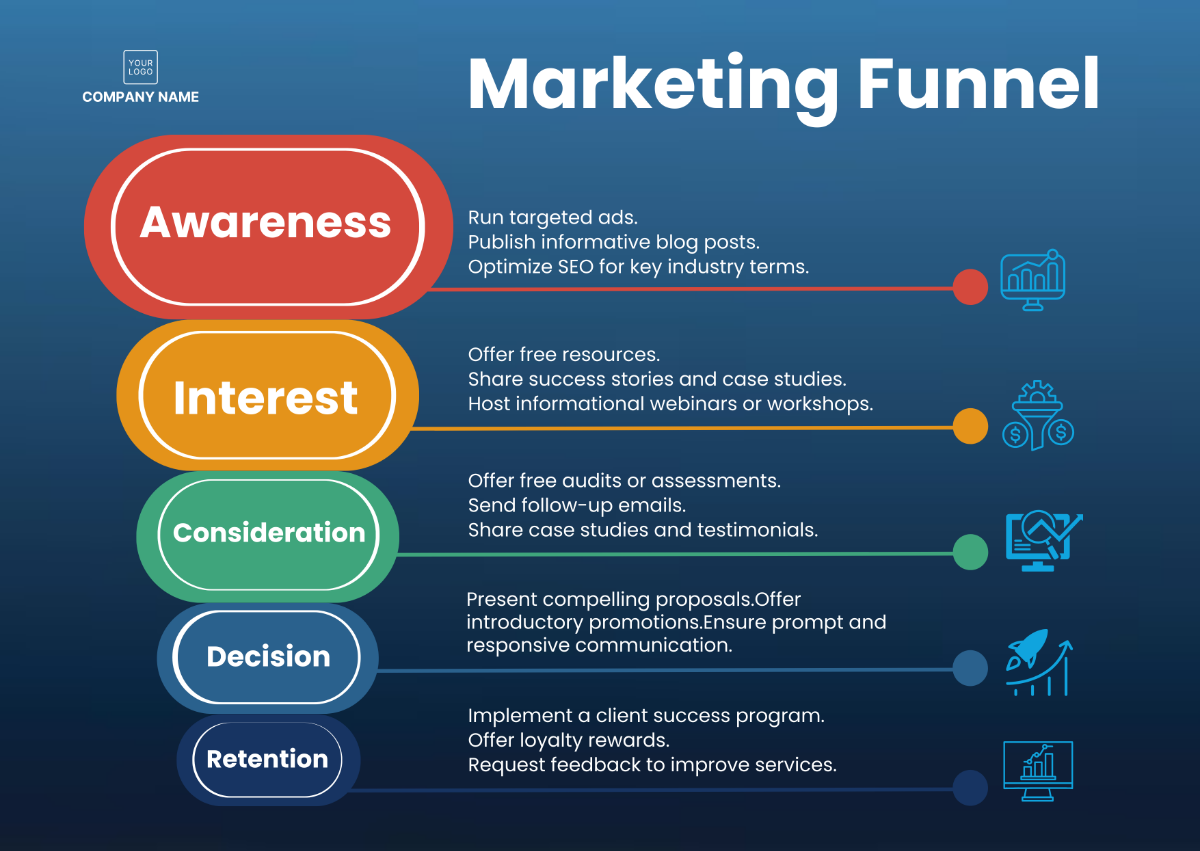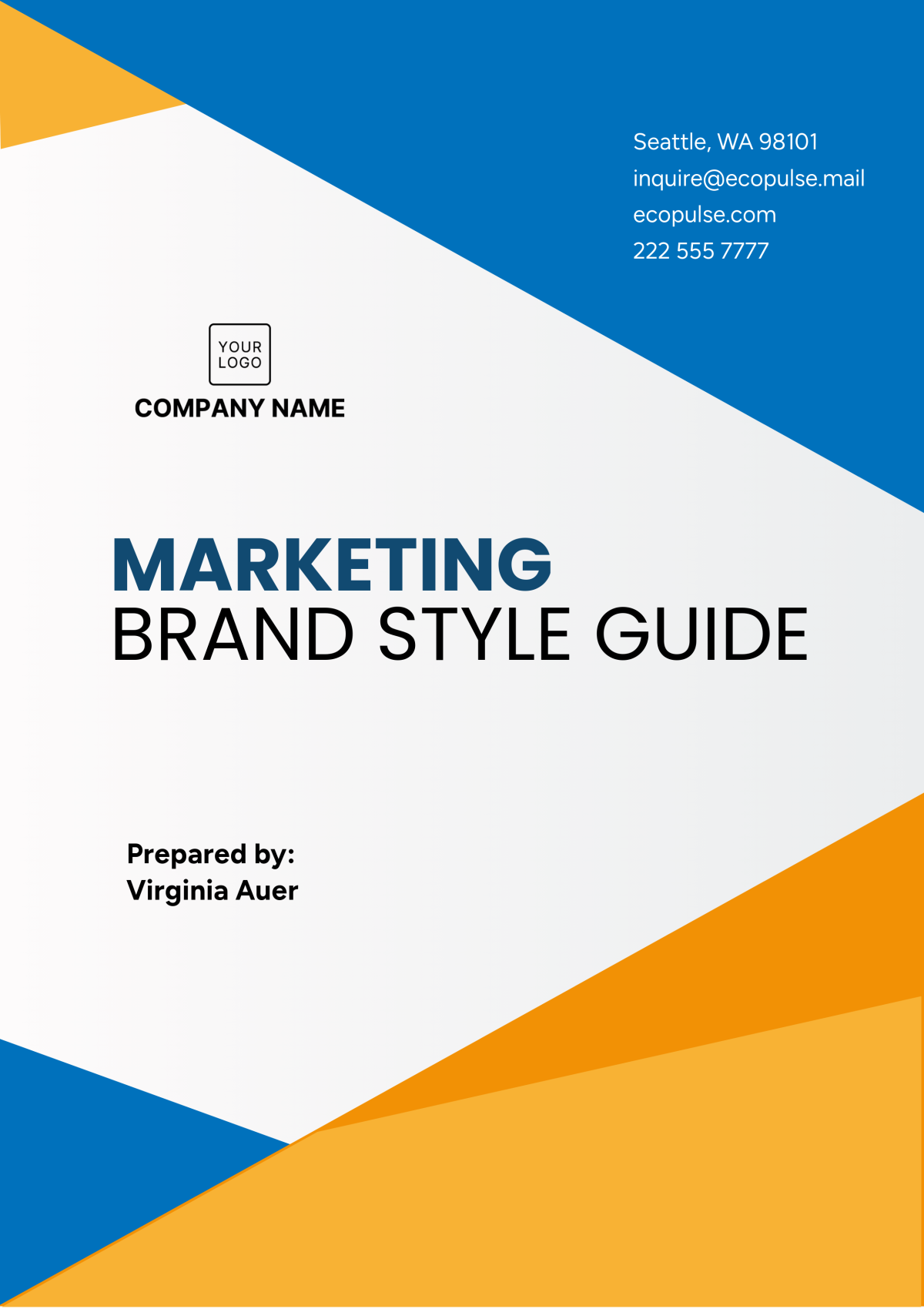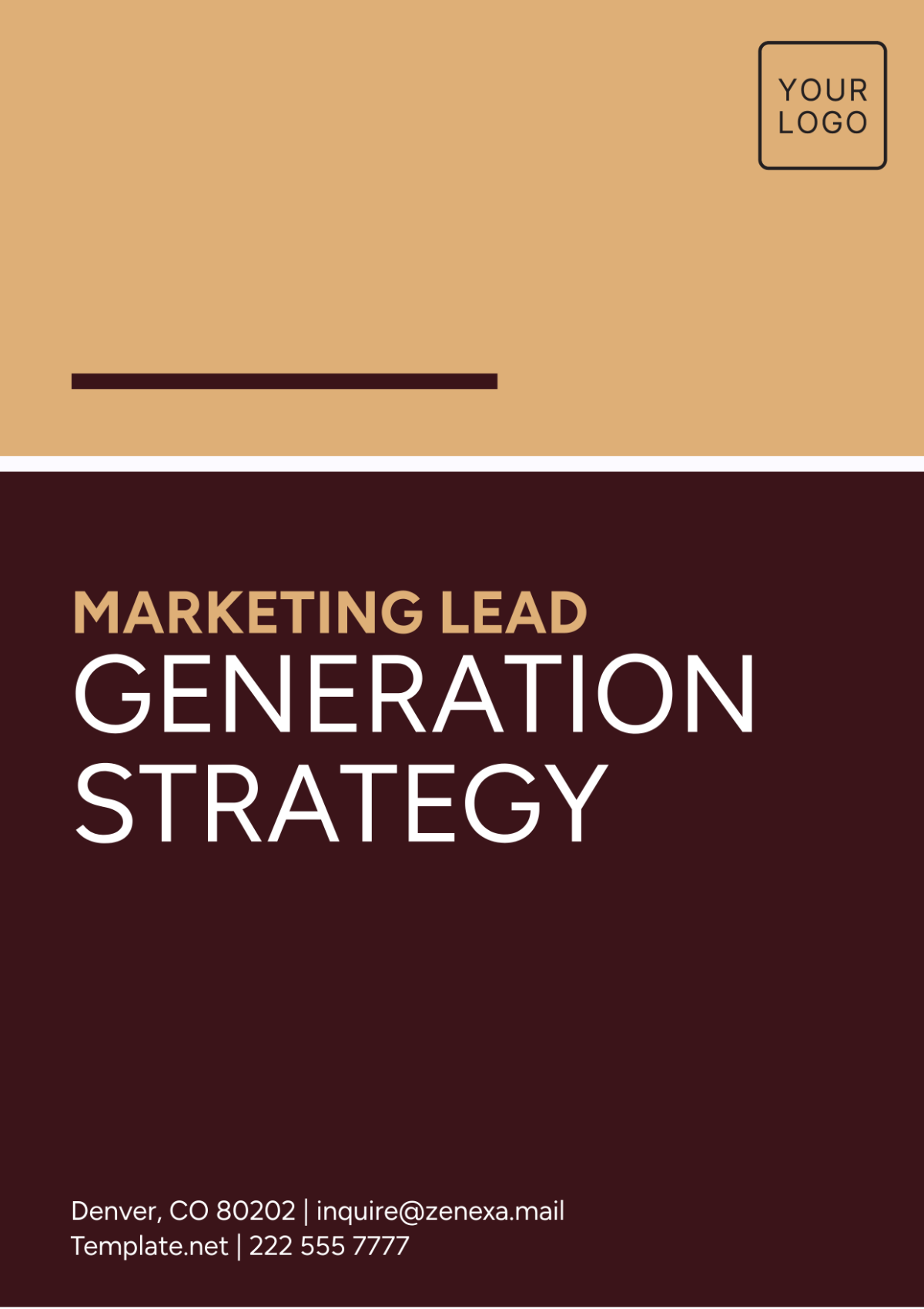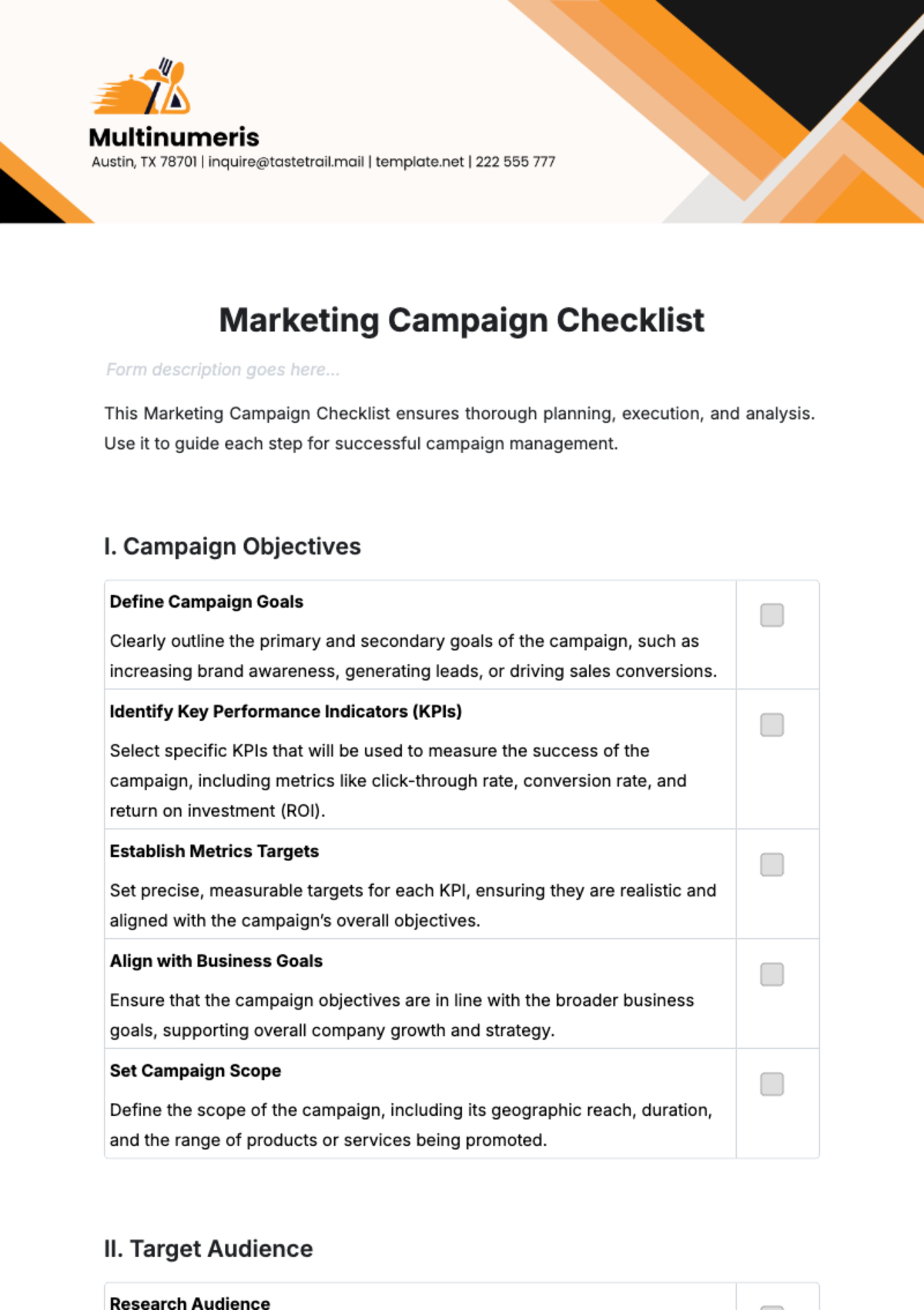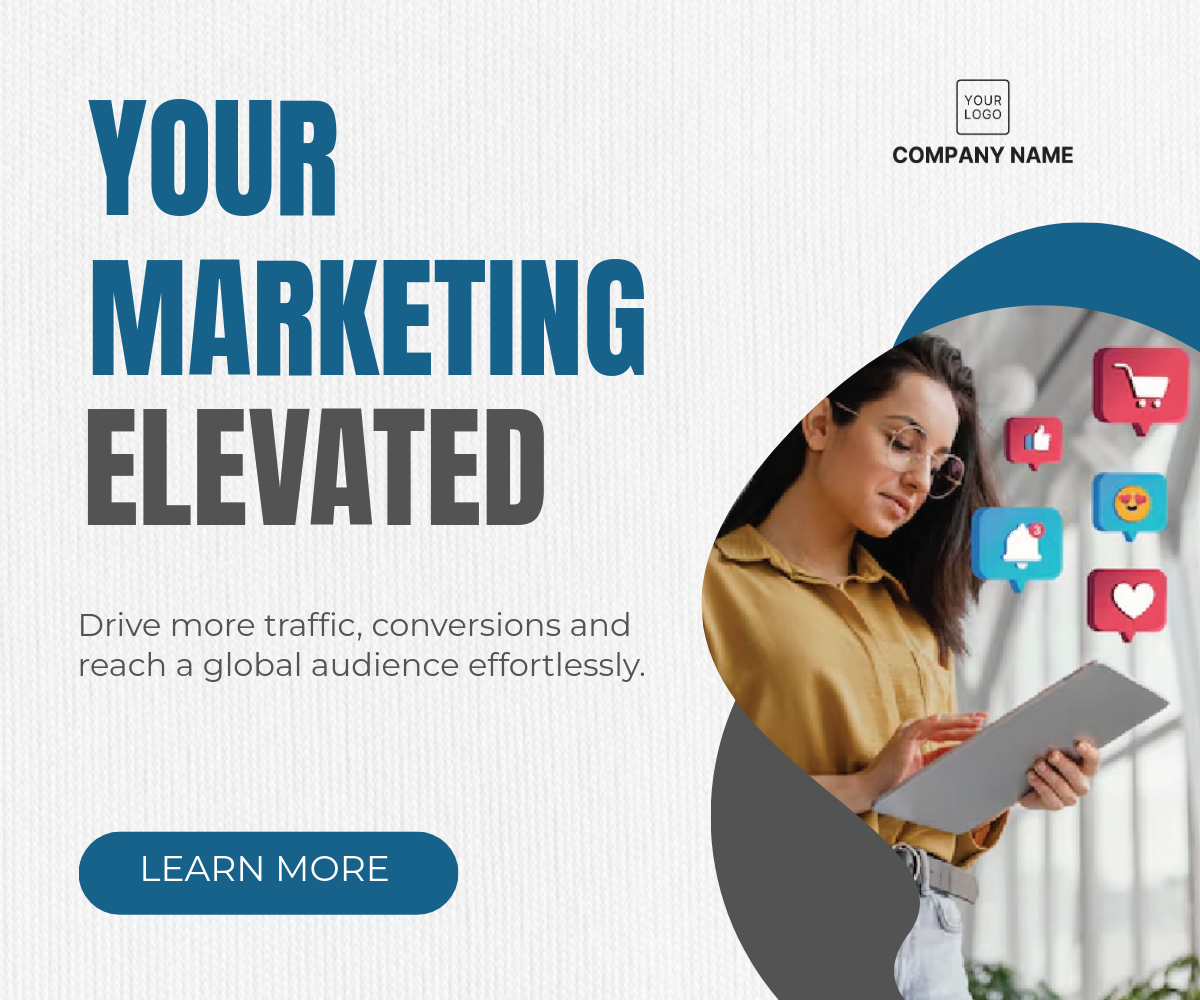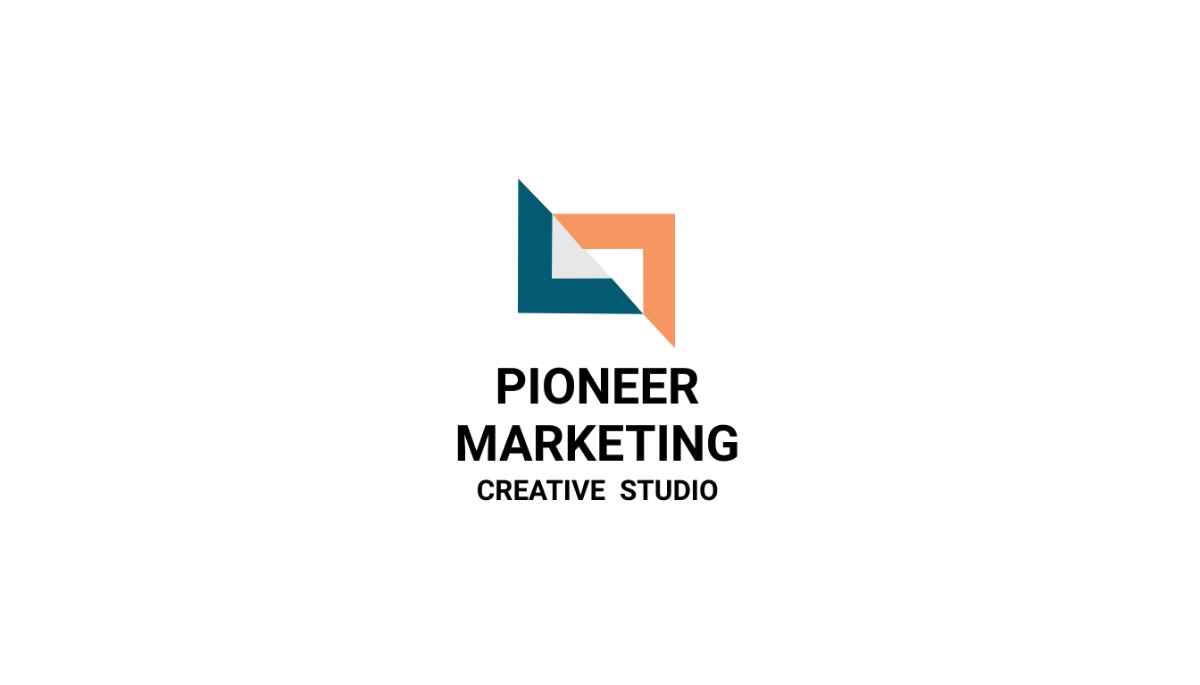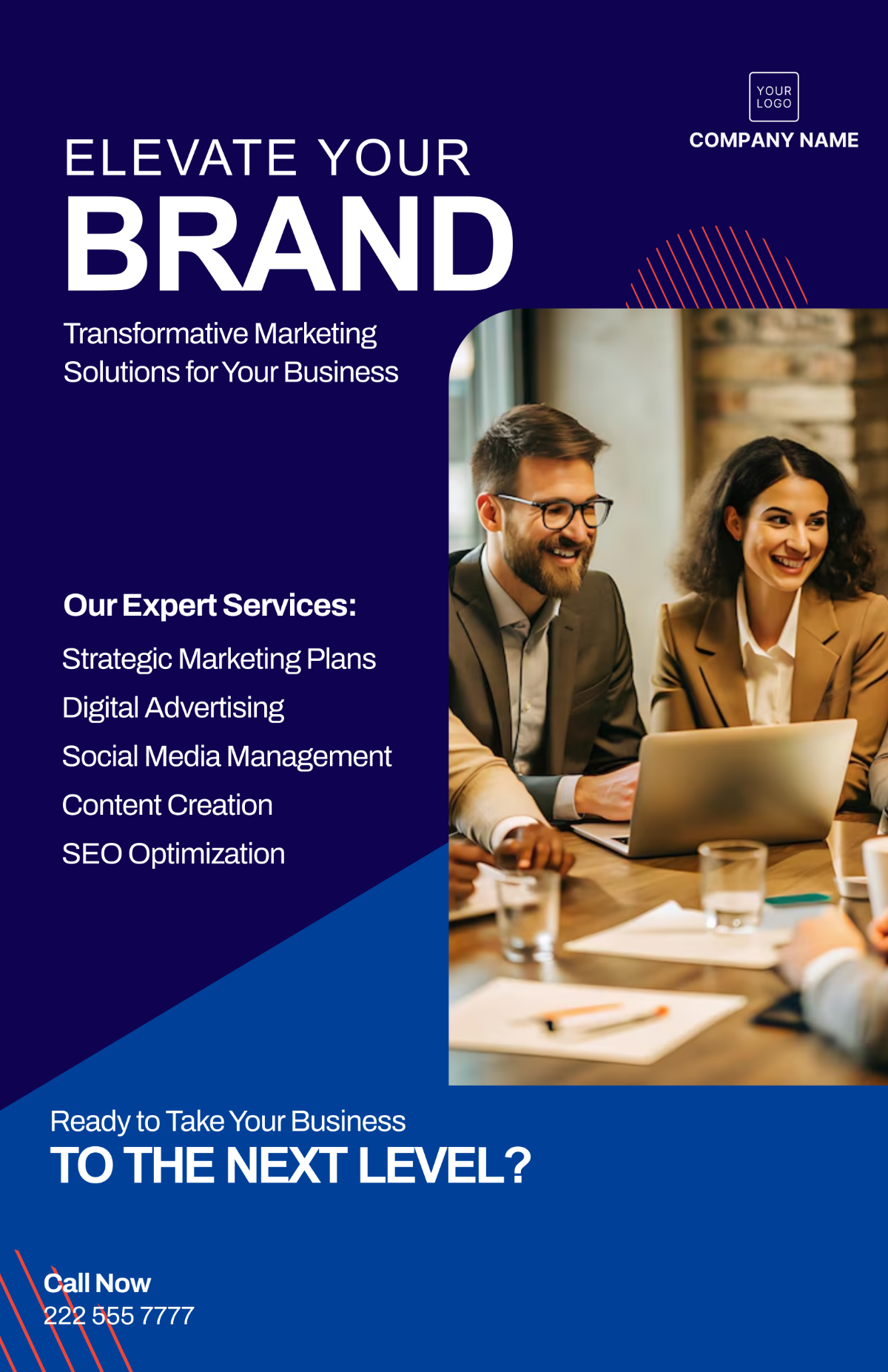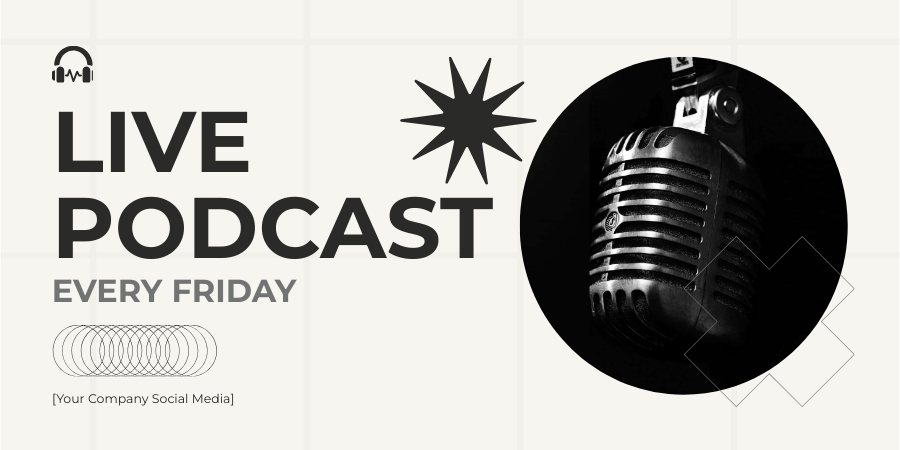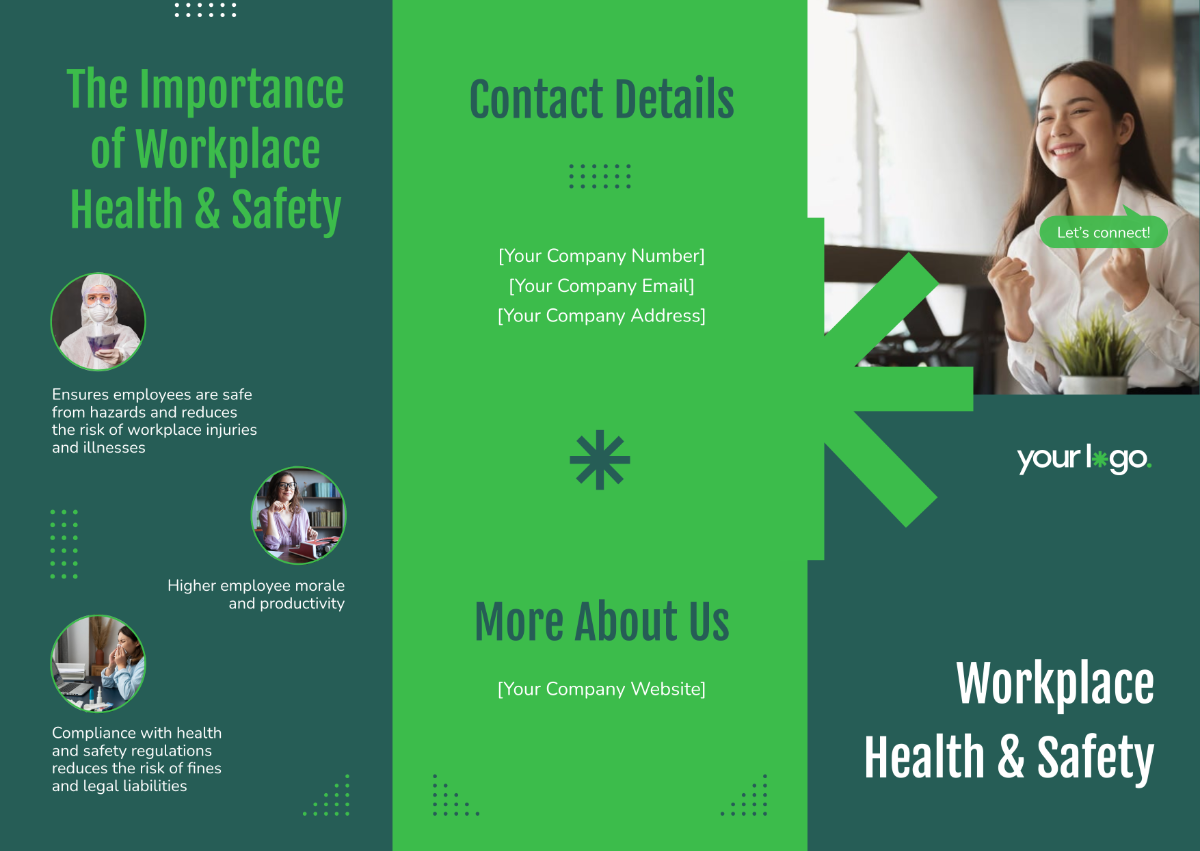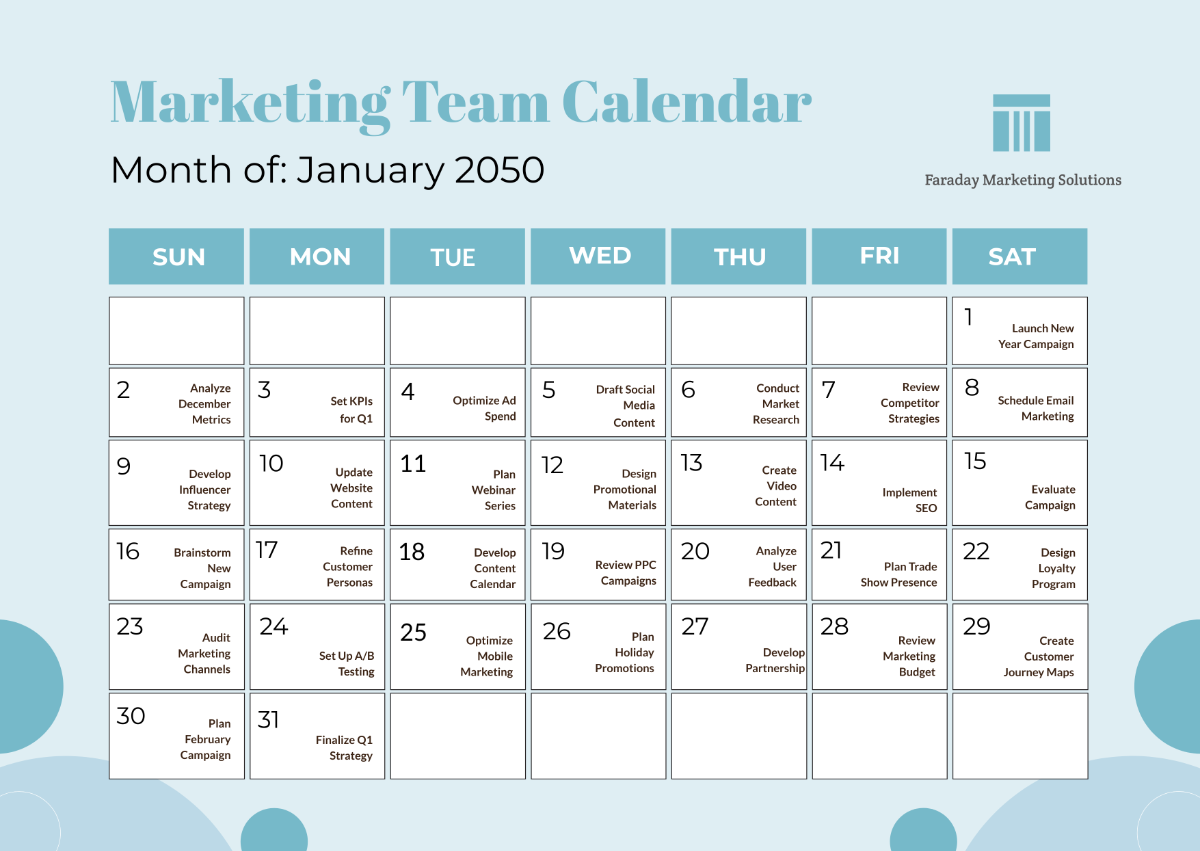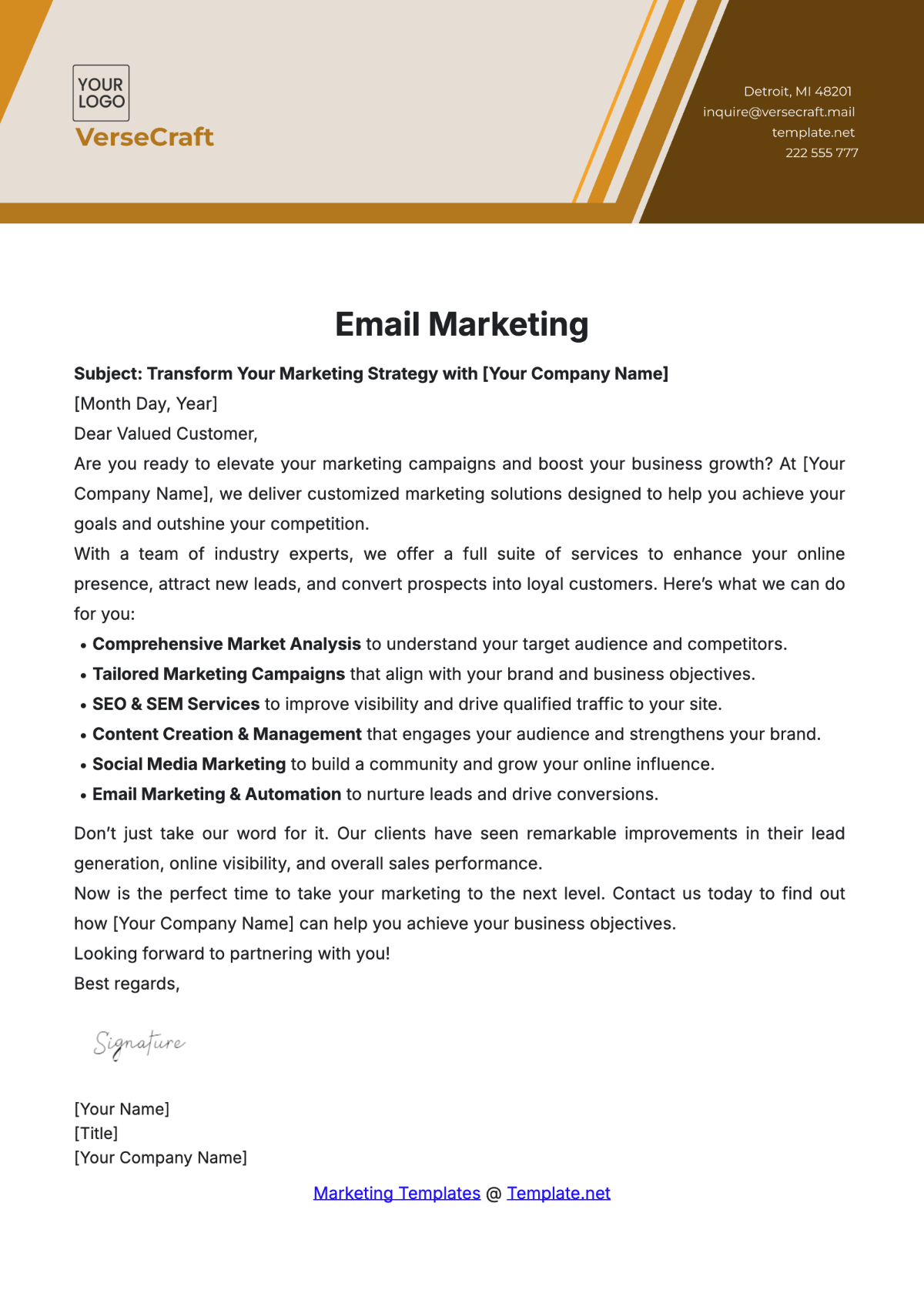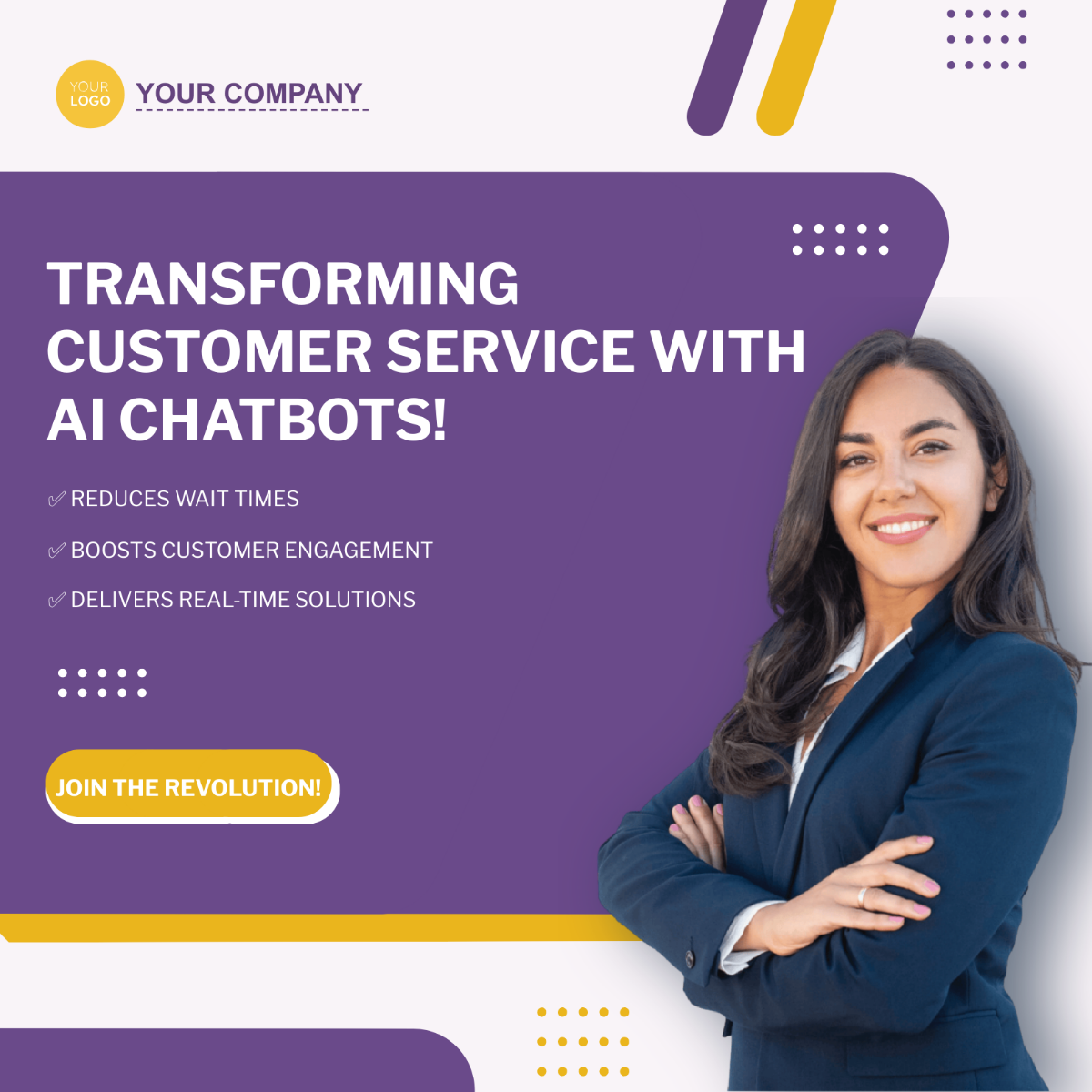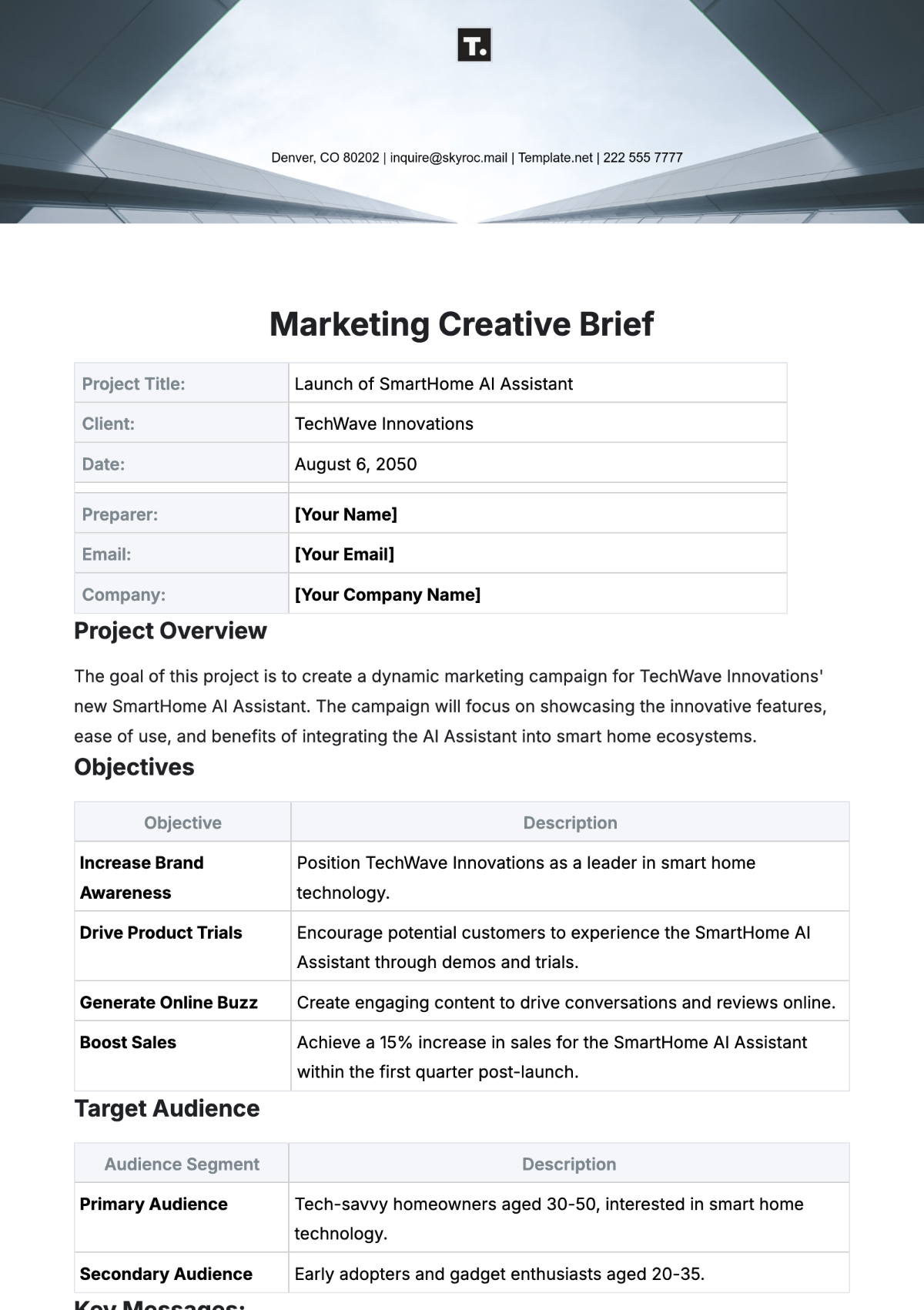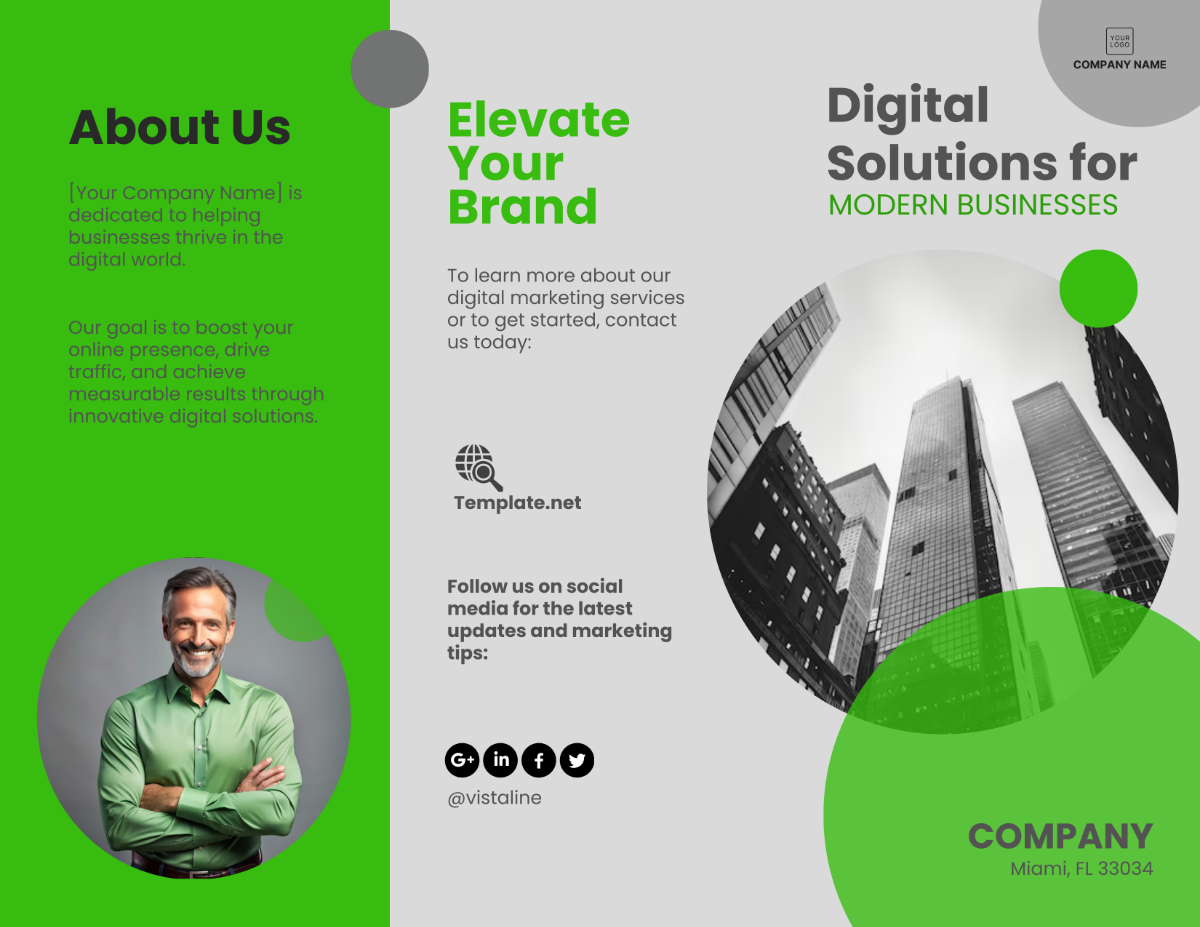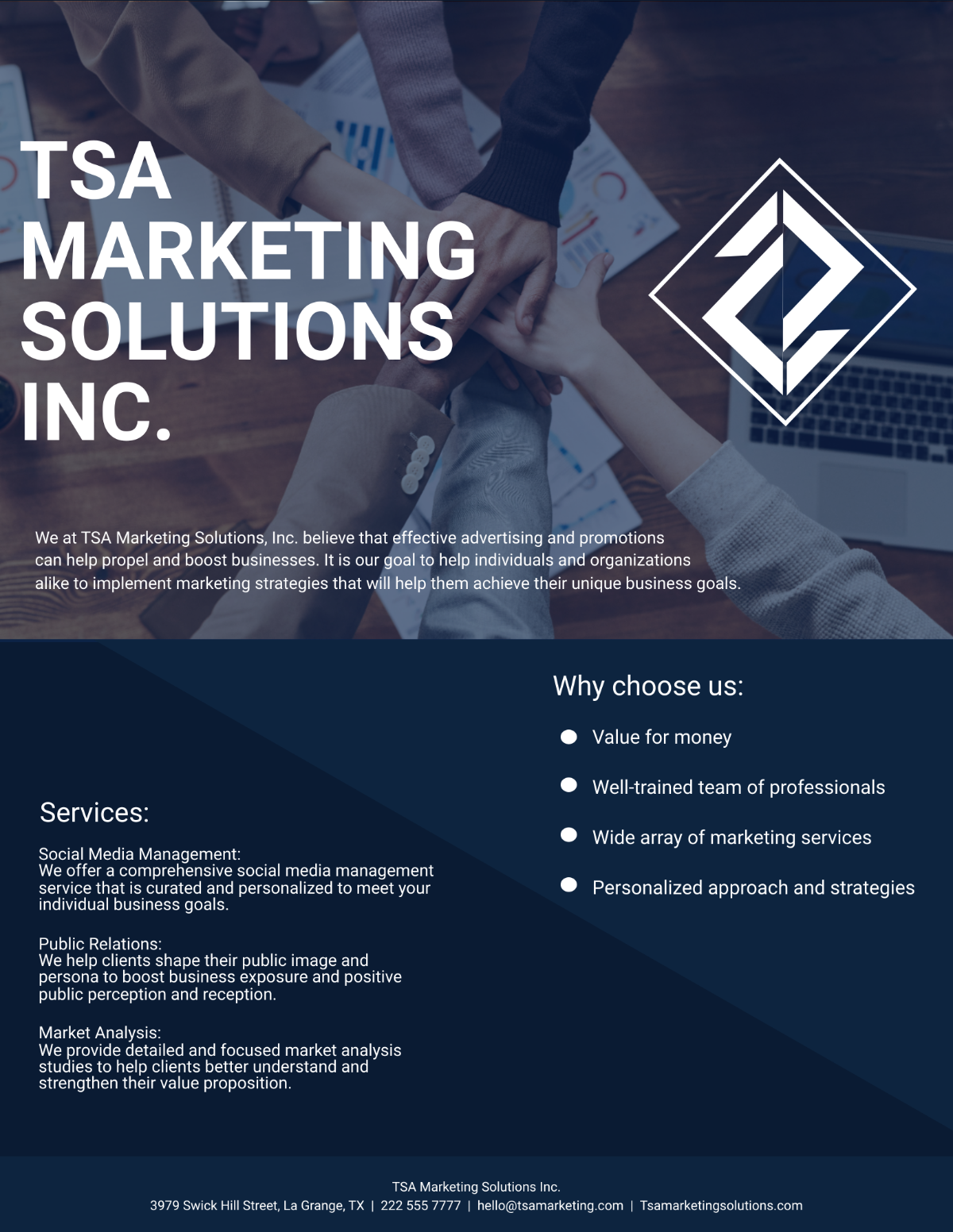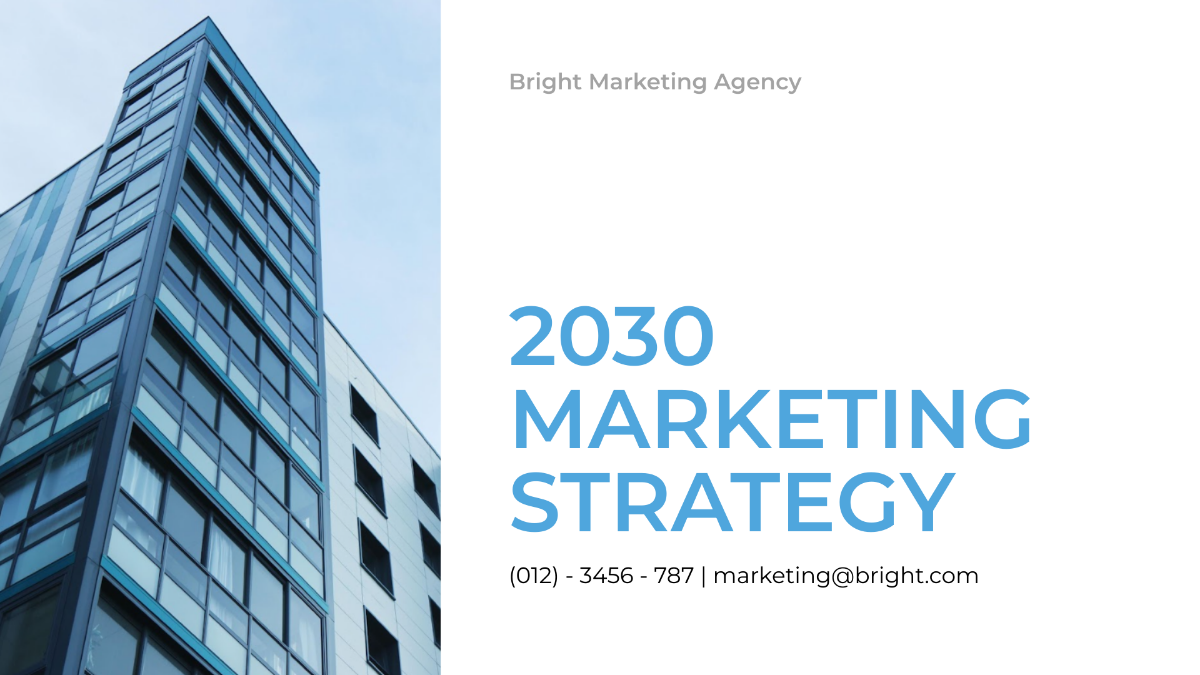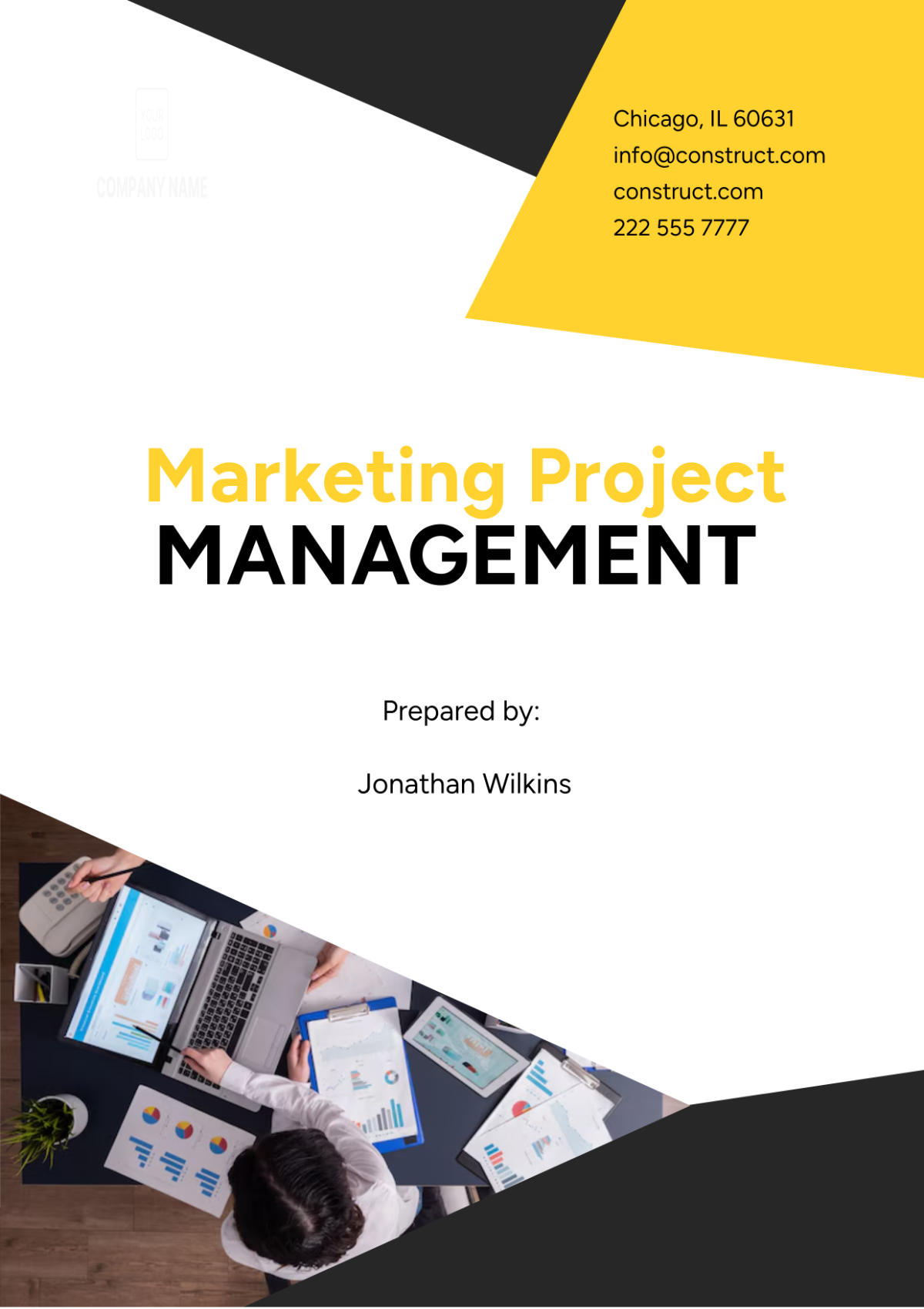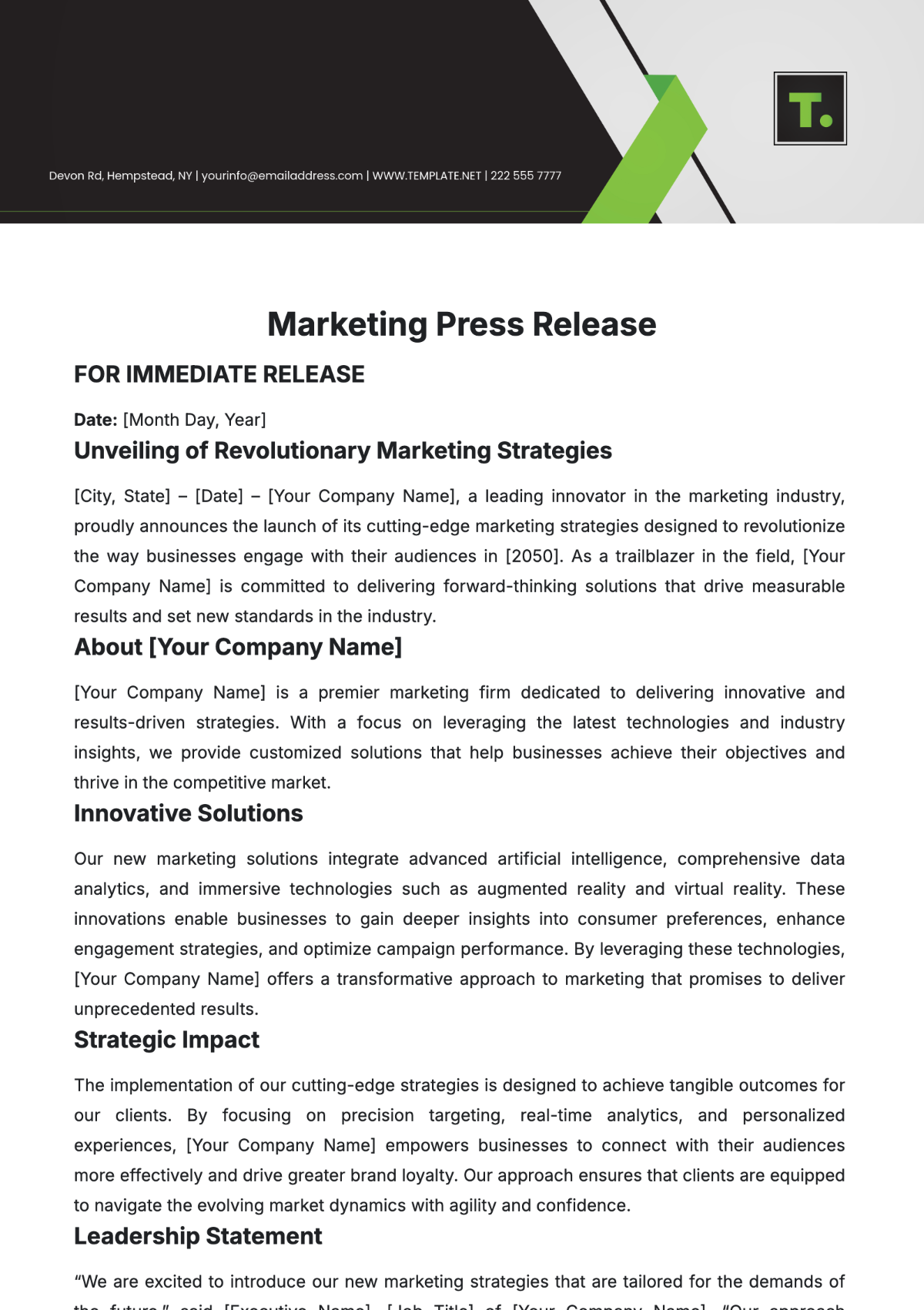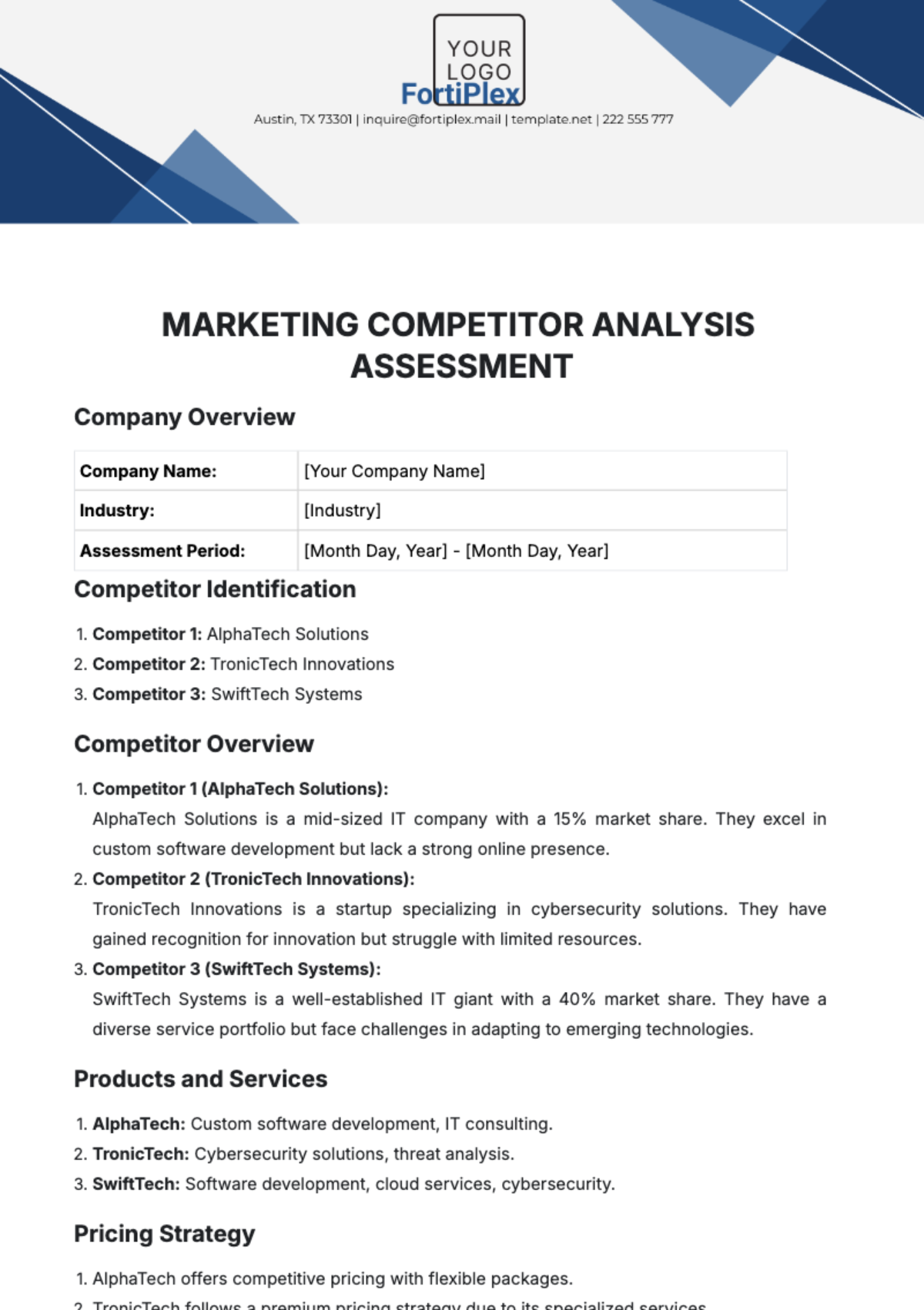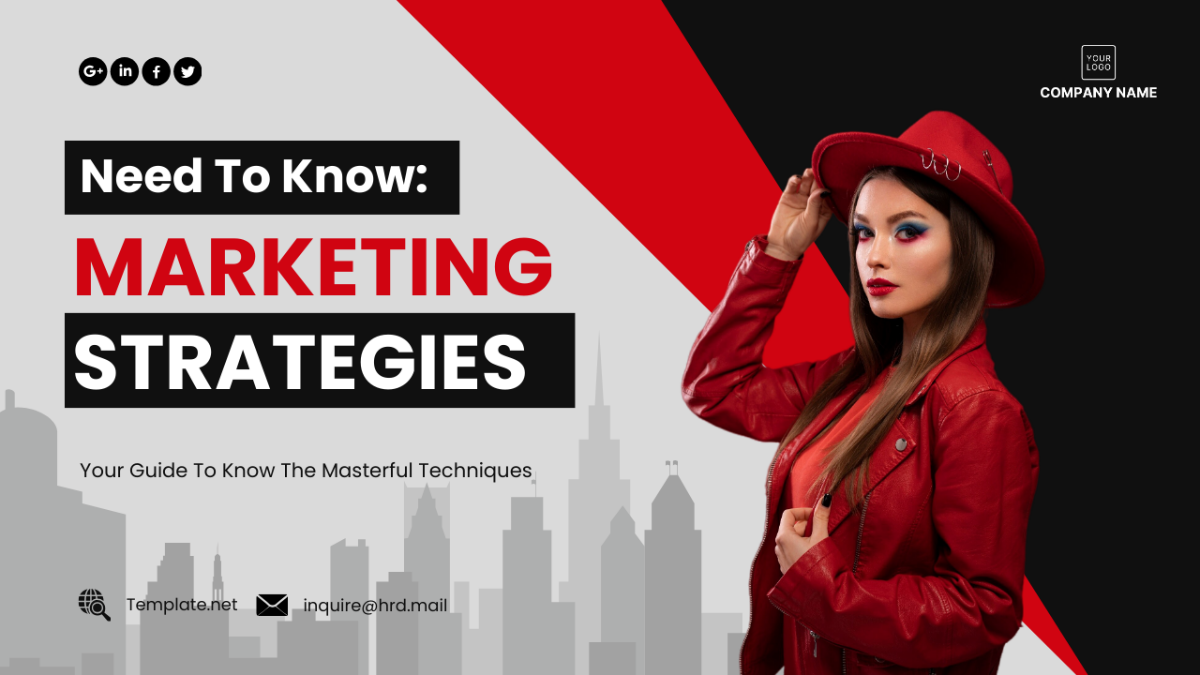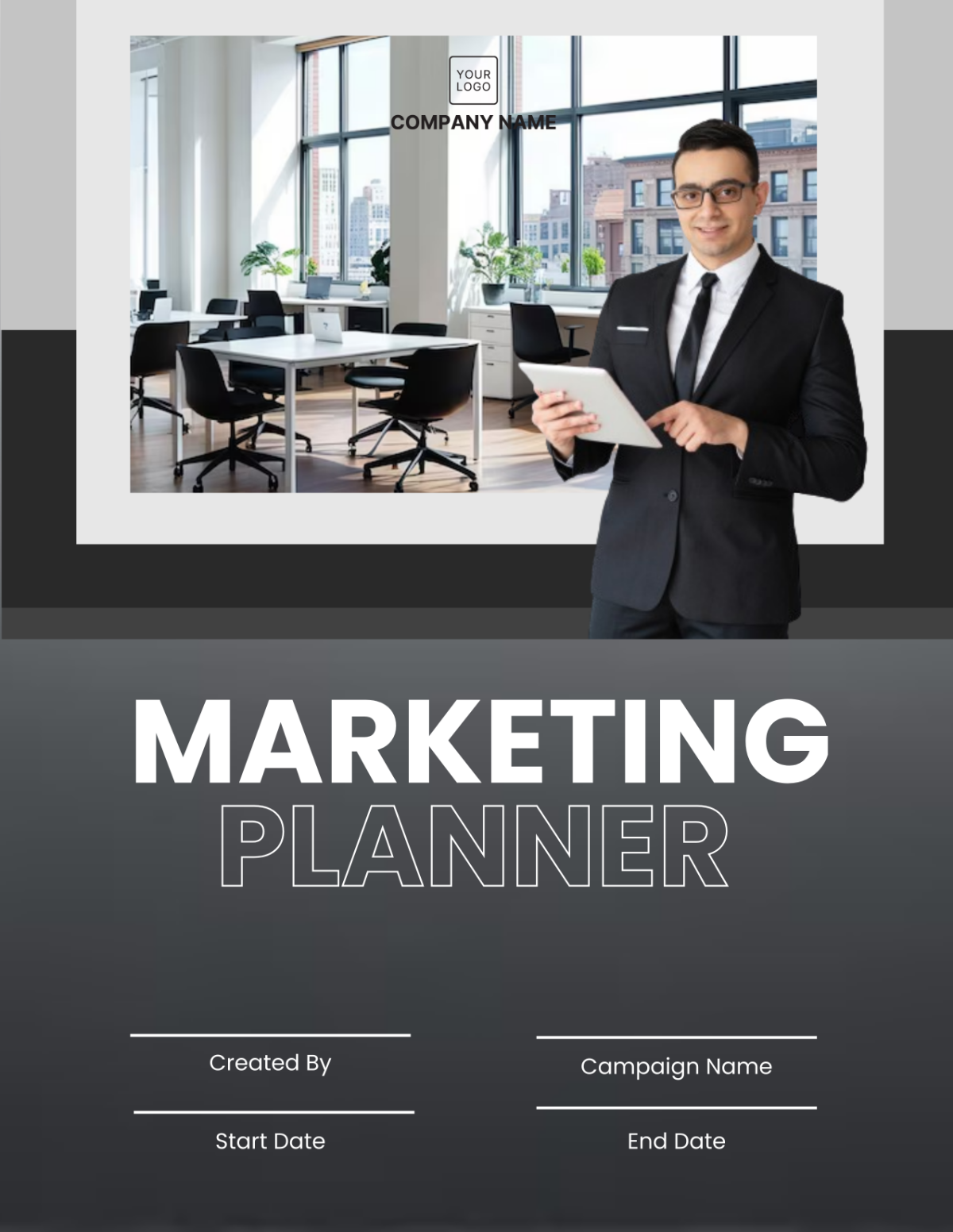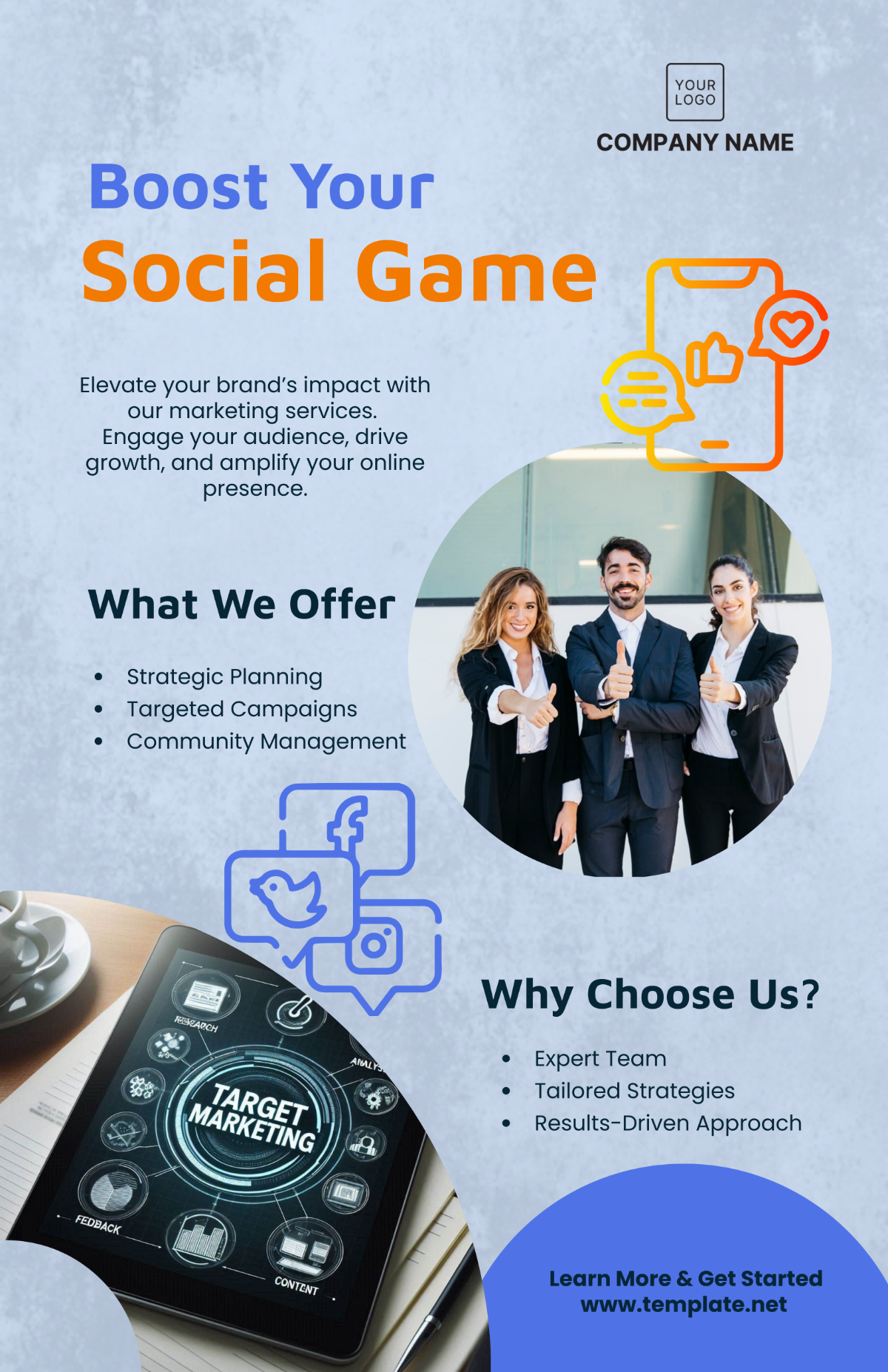Marketing Content Feasibility Study
Executive Summary
A. Introduction
[Your Company Name] is embarking on a digital content marketing project to enhance brand visibility and engage our target audience effectively. This feasibility study aims to provide a comprehensive overview of the project's viability, strategies, and expected outcomes.
B. Key Findings
Through thorough market research and analysis, we have identified several key findings:
The digital content market is growing at an annual rate of 10%, presenting a significant opportunity for our brand.
Our target audience comprises tech-savvy millennials and Gen Z individuals interested in [your product/service].
Competitor analysis revealed gaps in content quality and distribution that we can exploit.
C. Recommendations
Based on the findings, we recommend the following:
Develop a diverse content portfolio including blogs, videos, and infographics.
Invest in high-quality web hosting to ensure fast and reliable website performance.
Allocate resources for content creation and distribution.
Market Analysis
A. Market Overview
The digital content market, as of [Insert Date], is valued at $100 billion and is expected to continue growing at an annual rate of 10%. This robust growth indicates a significant opportunity for [Your Company Name] to establish a strong digital content presence.
B. Market Trends and Future Outlook
Market Trends
In the current digital content landscape, several trends are worth noting:
Video content continues to dominate, with short-form videos gaining popularity.
Personalization is a key driver of engagement, with users expecting tailored content experiences.
Voice search and smart devices are influencing content consumption habits.
Future Outlook
Looking ahead to [sample date: 2055], we anticipate the following developments in the digital content market:
Increased reliance on AI-driven content creation and recommendation systems.
Expansion of immersive technologies like virtual reality (VR) and augmented reality (AR) in content marketing.
Enhanced content security measures to protect against cyber threats.
C. Target Audience
Audience Demographics
Our target audience comprises tech-savvy millennials and Gen Z individuals interested in [your product/service]. They are primarily aged between 18 and 35, with a strong presence on social media platforms.
Psychographic Profiles
Understanding the psychographic characteristics of our audience is vital. They value authenticity, social responsibility, and seek engaging and informative content that aligns with their interests and values.
D. Competitor Analysis
Key Competitors
We have identified several key competitors in the digital content space, including [Competitor 1], [Competitor 2], and [Competitor 3]. Each competitor has its unique strengths and weaknesses.
Competitive Advantage
By analyzing competitors strategies, we can identify opportunities to differentiate ourselves in the market. Our competitive advantage lies in [mention your unique selling points].
Opportunities and Threats
This analysis helps us identify opportunities to capitalize on gaps in the market while being aware of potential threats and challenges posed by competitors.
Content Strategy
A. Content Objectives
In this section, we will define clear and specific objectives for your content strategy. These objectives should be aligned with the overall goals of the digital content marketing project and should serve as the foundation for your content planning and creation efforts.
Objective | Goal | Strategy |
Brand Awareness | Increase brand awareness by 52% within the next 12 months. | Develop and promote high-quality, shareable content that showcases our brand's unique value proposition. |
Lead Generation | Generate X new leads per month through content marketing efforts. | Create engaging and informative content that addresses the pain points and needs of our target audience, prompting them to take action. |
Website Traffic | Achieve a 48% increase in website traffic over the next quarter. | Optimize content for search engines and promote it through various channels to drive organic and referral traffic. |
B. Content Types
Diverse Content Portfolio
To effectively engage our target audience and achieve our content objectives, we'll create a diverse content portfolio that caters to different preferences and needs. Here are some content types we will consider:
Content Type | Details |
Blog Posts and Articles | These will serve as the cornerstone of our content strategy, providing informative and educational content related to our industry, products, and services. |
Video Content | Videos are a powerful medium for storytelling. We will produce explainer videos, tutorials, and product demos to engage our audience visually. |
Infographics | Infographics are excellent for conveying complex information in an easily digestible format. We'll use them to simplify industry trends and data. |
Podcasts | Podcasts offer a unique opportunity to connect with our audience through audio content. We'll explore relevant topics and feature industry experts. |
Whitepapers and eBooks | These longer-form content pieces will dive deep into industry insights, research findings, and thought leadership topics. |
C. Content Distribution
Distribution Channels
Effective content distribution is key to reaching our target audience and achieving our content objectives. We will leverage multiple distribution channels to maximize our content's reach and impact.
Channel | Details |
Social Media Platforms | We'll use social media platforms such as Facebook, Twitter, LinkedIn, and Instagram to share our content, engage with our audience, and foster discussions. |
Email Marketing Campaigns | Email remains a powerful tool for nurturing leads and sharing valuable content. We will create targeted email campaigns to deliver content directly to subscribers' inboxes. |
Content Syndication Networks | To expand our content's reach, we'll consider partnerships with content syndication networks that can distribute our articles to a wider audience. |
Collaboration with Influencers and Partners | Partnering with industry influencers and like-minded organizations can amplify our content's reach and credibility. |
SEO and Organic Search | Optimizing our content for search engines (SEO) will ensure that it ranks well in organic search results, driving consistent traffic over time. |
Technical Infrastructure
A. Website and Hosting
Website Selection
Selecting the right website platform and hosting services is crucial for the success of your digital content marketing project. We have carefully considered the following:
Platform Choice: After a thorough evaluation, we have chosen [Your CMS Platform] as the foundation for our website. This platform offers robust customization options, user-friendly content management, and scalability.
Hosting Services: To ensure fast, reliable, and secure website performance, we have opted for [Your Hosting Provider]. Their servers provide excellent uptime and data security, critical for delivering a seamless user experience.
Mobile Responsiveness
Given the increasing use of mobile devices, our website will be fully responsive. It will adapt seamlessly to various screen sizes, providing an optimal browsing experience for all users.
Content Delivery Network (CDN)
To enhance website speed and content distribution, we will implement a Content Delivery Network (CDN). This will ensure that our content loads quickly for users across the globe, reducing bounce rates and improving user satisfaction.
B. Analytics Tools
Data Analytics
Understanding how our content performs is essential for making data-driven decisions. To achieve this, we will utilize advanced analytics tools, including [Your Analytics Tool], for comprehensive data collection and analysis.
Key Metrics
We will focus on key performance metrics, including but not limited to:
Website Traffic: Monitoring the number of visitors, page views, and session durations to gauge overall engagement.
Conversion Rates: Tracking the conversion of visitors into leads or customers through various content channels.
Audience Behavior: Analyzing user behavior, such as click-through rates, bounce rates, and navigation paths, to improve the user experience.
Content Engagement: Measuring content-specific metrics, such as likes, shares, comments, and time spent on a page, to assess content effectiveness.
Budget and Resources
A. Cost Breakdown
To ensure the successful execution of our digital content marketing project, it's essential to have a clear understanding of the costs involved. Here's a breakdown of the estimated costs:
Content Creation Costs: We anticipate investing in high-quality content creation, including hiring content writers, designers, and possibly video producers.
Advertising and Promotion Expenses: To boost our content's visibility, we'll allocate a portion of our budget to paid advertising, social media promotion, and sponsored content.
Software and Tools: We'll invest in essential software and tools for content creation, SEO optimization, analytics, and project management.
Personnel and Staff-Related Expenses: Staff salaries and related expenses, including training and development, are included in the budget.
B. Resource Allocation
Efficient allocation of resources is critical for the successful implementation of our digital content marketing strategy. Here's how we plan to allocate resources:
Content Creation Team: We will assemble a team of content creators, including writers, designers, and video producers, to develop high-quality content aligned with our objectives.
Technology Resources: Resources will be allocated for acquiring and maintaining the necessary software, content management tools, and analytics platforms.
Marketing and Promotion Team: A team dedicated to marketing and promoting our content through various channels, including social media, email marketing, and SEO, will be in place.
Project Management: We'll have project managers to oversee the execution of the content strategy, ensuring timelines and budgets are adhered to.
C. Funding Sources
To secure the necessary funds for our digital content marketing project, we will explore various funding sources:
Funding Source | Detail |
Internal Budget Allocation | We will allocate a portion of our internal budget to finance content creation, promotion, and technology resources. |
Investors and Partnerships | Seeking potential investors and forming strategic partnerships may provide additional financial support. |
Grants and Sponsorships | We'll investigate grants and sponsorship opportunities from relevant industry organizations and institutions. |
Implementation Plan
A. Timeline
A well-structured timeline is essential to keeping our digital content marketing project on track. Here are the project phases and milestones:
Phase | Details |
Phase 1: Planning and Research (Months 1-2) | In this phase, we will conduct in-depth market research, finalize content objectives, and develop a comprehensive content strategy. |
Phase 2: Content Creation and Website Development (Months 3-6) | Content creation, website development, and technical setup will take place during this phase. |
Phase 3: Content Promotion and Distribution (Months 7-9) | We will launch our content marketing campaigns, promote content through various channels, and build partnerships. |
Phase 4: Measurement and Optimization (Ongoing) | Continuous monitoring of key performance indicators (KPIs) and content performance will allow us to optimize our strategy. |
B. Team Responsibilities
Our project team will consist of professionals with specific responsibilities:
Content Creators: Responsible for ideation, creation, and editing of content, including articles, videos, infographics, and podcasts.
Marketing Team: In charge of content promotion, distribution, and engagement across social media, email, and other marketing channels.
Technical Team: Manages website development, and hosting, and ensures technical aspects run smoothly.
Project Managers: Oversee project timelines, budgets, and coordination among teams.
C. Risk Assessment
Identifying potential risks and having mitigation strategies in place is vital for project success:
Content Quality: To mitigate the risk of subpar content, we'll implement rigorous quality control processes and content guidelines.
Budget Overruns: Regular financial tracking and oversight will help prevent budget overruns.
Technical Issues: A dedicated technical team will address any technical challenges promptly to minimize disruptions.
Changing Market Dynamics: Continuous monitoring of market trends will help us adapt to changing dynamics.
Measurement and Evaluation
A. Key Performance Indicators
Measuring the success of our digital content marketing project will rely on key performance indicators (KPIs) and metrics:
Website Traffic: We will track the number of visitors, page views, and session durations to gauge overall engagement.
Conversion Rates: Monitoring the conversion of visitors into leads or customers through various content channels.
Audience Behavior: Analyzing user behavior, such as click-through rates, bounce rates, and navigation paths, to improve the user experience.
Content Engagement: Measuring content-specific metrics, such as likes, shares, comments, and time spent on a page, to assess content effectiveness.
B. Data Collection
To collect the necessary data for performance evaluation, we will implement the following data collection methods:
Website Analytics: Utilizing advanced analytics tools to track user behavior, traffic sources, and content performance.
Social Media Analytics: Monitoring social media engagement, reach, and interactions with our content.
Email Marketing Metrics: Tracking email open rates, click-through rates, and conversion rates.
Content-Specific Data: Collecting data on individual content pieces to assess their impact on our objectives.
For any inquiries, additional information, or collaboration opportunities related to this Marketing Digital Content Feasibility Study, please feel free to reach out to us.
[Your Company Name] Contact Information:
Address: [Your Company Address]
Phone Number: [Your Company Number]
Email: [Your Company Email]
Website: [Your Company Website]


